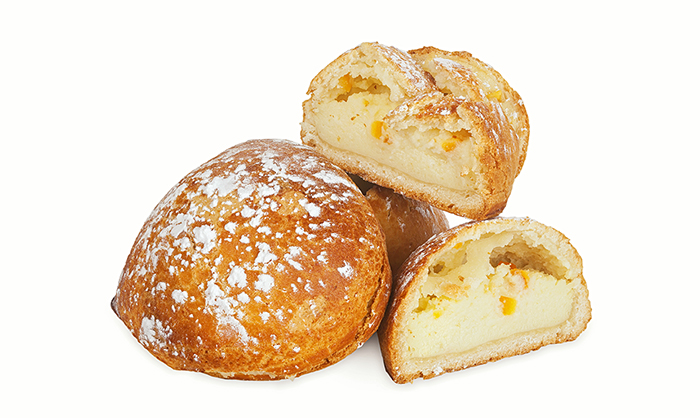“Riccia” or “frolla”, according to taste, is the best known and most characteristic of the many delicacies of Neapolitan pastry. And it has an illustrious and greedy ancestor. Two centuries older, very similar in shape as in the sweet and aromatic filling.
That old mother was originally from the Amalfi Coast, exactly from Conca dei Marini, where she was born in the second half of the seventeenth century, in the kitchen of the Santa Rosa da Lima monastery. There, according to tradition suspended between history and legend, the leftover of a meal with the addition of dried fruit and lemon liqueur suggested the creamy heart of a new puff pastry dessert, which was shaped like a monk's hood. The whimsical pastry was liked by the nuns of the convent, who began to give it to their benefactors. And soon the new sweet, called Santarosa, became famous throughout the Amalfi Coast. Also in the variant, which then prevailed, with a filling of custard and sour cherries in syrup.
The Santarosa recipe had been kept secret and handed down from generation to generation in the Amalfi convent. Until 1818, when it came into the possession of a Neapolitan innkeeper, Pasquale Pintauro. Legendary history does not explain how this passage took place, perhaps Pintauro was a relative of one of the nuns. But for that pastry he changed his life and work, transforming his tavern in via Toledo into a pastry shop, entirely dedicated to the new production. Also new because Don Pasquale, as a pastry chef, made important changes to the recipe. First of all, he reduced the thickness of the pastry, preferring a shell shape that enclosed all the filling. And instead of the cream with black cherries, he substituted a filling of semolina, eggs, sugar, ricotta, candied fruit, vanilla and cinnamon. He gave that delicious novelty the name of “sfogliatella”. And the dessert met with the favor of an increasingly vast public, making the fortune of the former innkeeper and his pastry shop in the center of Naples.
Due to its characteristics, the puff pastry cake was soon renamed “riccia”. Meanwhile, another version was born, round and softer, made of shortcrust pastry, but with the same filling. And this became known as "frolla".
Over time, the "lobster tail" (coda d’aragosta) also derived from the "riccia", a puff pastry but with a more elongated shape and filled with whipped cream or chocolate or chantilly cream.
Neapolitan puff pastry, “riccia” or “frolla”, is recognized as a PAT Traditional Food Product.



Comments powered by CComment